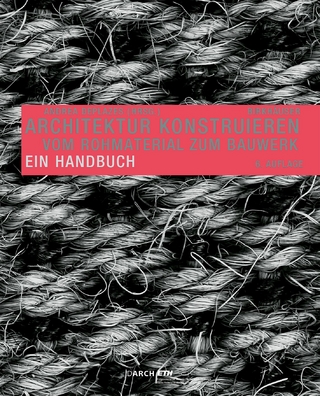
Lothian
Seiten
1978
Yale University Press (Verlag)
978-0-300-09626-2 (ISBN)
Yale University Press (Verlag)
978-0-300-09626-2 (ISBN)
- Titel erscheint in neuer Auflage
- Artikel merken
Zu diesem Artikel existiert eine Nachauflage
In this work, Lothian boasts some of Scotland's most picturesque villages and Georgian towns, but its architectural history goes back to the 12th century. Lothian also has fine church buildings of the 15th and 16th centuries while schisms within the Reformed religion are shown in lesser churches.
Lothian boasts some of Scotland's most picturesque villages and fine Georgian towns, but its architectural history goes back to the twelfth century. The introduction of monastic orders and the establishment of the parish churches has left examples at Dalmeny and Tyninghame. Lothian also has fine church buildings of the fifteenth and sixteenth centuries while schisms within the Reformed religion are reflected in a variety of lesser churches. Tower-houses are reminders of war and conflict and of the power struggles of the nobility, poignantly expressed in the ruins of Linlithgow Palace. More peaceful and prosperous years, both before and after the Act of Union, produced large estates and a series of fine classical mansion houses - Newhailes, Yester House, Dalkeith - while the grandiloquent Hopetoun, Newliston and Gosford House testify to the genius of the Adams, father and sons. Where Tantallon, Dirleton and other early castles were defensive, their successors of the eighteenth and nineteenth centuries, such as Dalmeny and Dalhousie, are unashamedly romantic. Lothian's achievements of the Industrial Revolution range form the simplicity of Telford's Lothian Bridge to the dramatic and celebrated spans of the Forth Rail Bridge.
Lothian boasts some of Scotland's most picturesque villages and fine Georgian towns, but its architectural history goes back to the twelfth century. The introduction of monastic orders and the establishment of the parish churches has left examples at Dalmeny and Tyninghame. Lothian also has fine church buildings of the fifteenth and sixteenth centuries while schisms within the Reformed religion are reflected in a variety of lesser churches. Tower-houses are reminders of war and conflict and of the power struggles of the nobility, poignantly expressed in the ruins of Linlithgow Palace. More peaceful and prosperous years, both before and after the Act of Union, produced large estates and a series of fine classical mansion houses - Newhailes, Yester House, Dalkeith - while the grandiloquent Hopetoun, Newliston and Gosford House testify to the genius of the Adams, father and sons. Where Tantallon, Dirleton and other early castles were defensive, their successors of the eighteenth and nineteenth centuries, such as Dalmeny and Dalhousie, are unashamedly romantic. Lothian's achievements of the Industrial Revolution range form the simplicity of Telford's Lothian Bridge to the dramatic and celebrated spans of the Forth Rail Bridge.
| Erscheint lt. Verlag | 11.3.1978 |
|---|---|
| Reihe/Serie | Pevsner Architectural Guides: Buildings of Scotland |
| Sprache | englisch |
| Gewicht | 503 g |
| Themenwelt | Technik ► Architektur |
| ISBN-10 | 0-300-09626-7 / 0300096267 |
| ISBN-13 | 978-0-300-09626-2 / 9780300096262 |
| Zustand | Neuware |
| Informationen gemäß Produktsicherheitsverordnung (GPSR) | |
| Haben Sie eine Frage zum Produkt? |
Mehr entdecken
aus dem Bereich
aus dem Bereich
Grundlagen, Normen, Vorschriften
Buch | Hardcover (2024)
Springer Vieweg (Verlag)
CHF 188,95
Vom Rohmaterial zum Bauwerk. Ein Handbuch
Buch | Softcover (2022)
Birkhäuser Verlag GmbH
CHF 95,15



